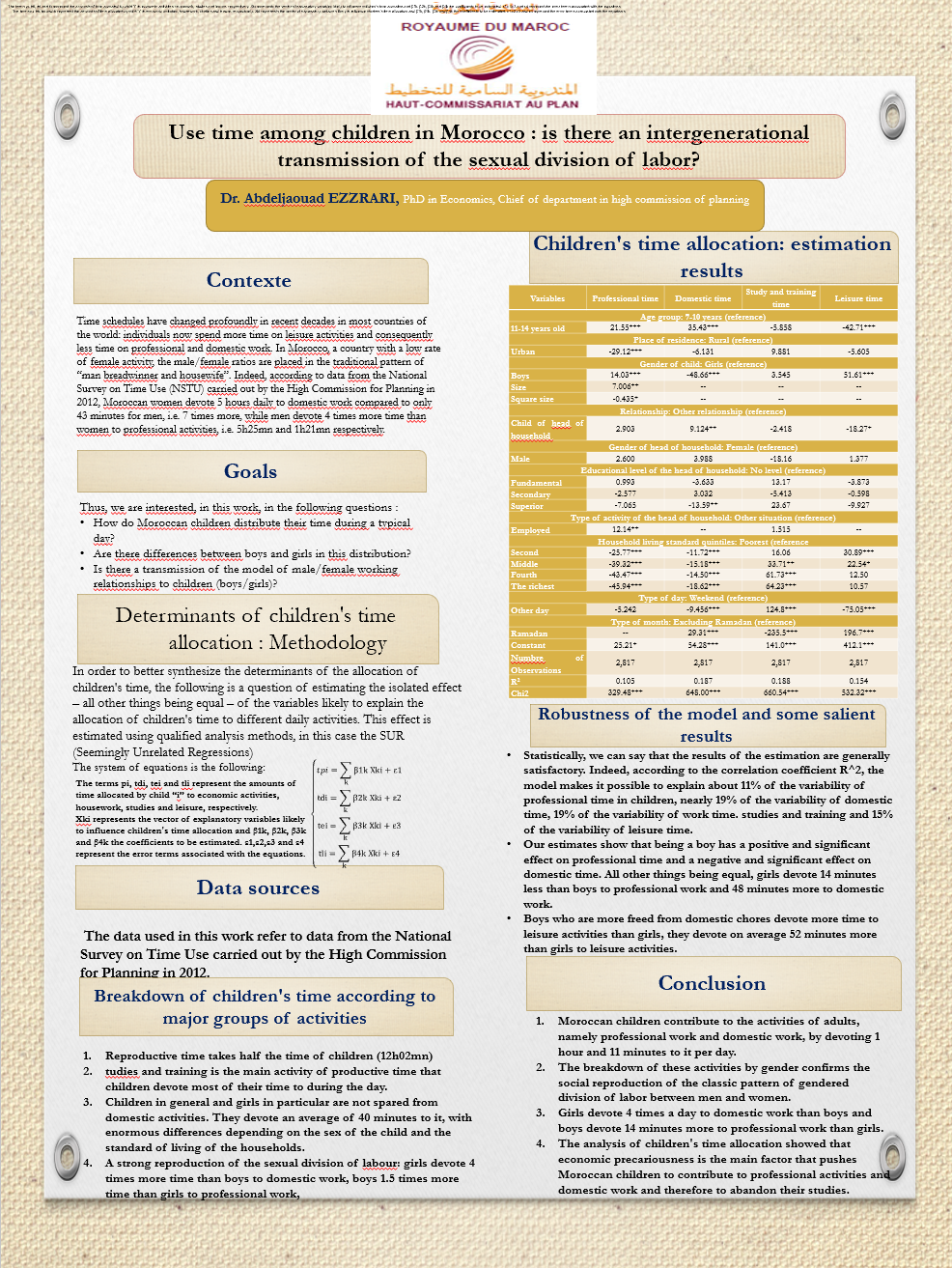Use time among children in Morocco : is there an intergenerational transmission of the sexual division of labor?
Conference
64th ISI World Statistics Congress - Ottawa, Canada
Format: CPS Poster
Keywords: child, data, estimate, modeling, multivariate
Session: CPS Posters-01
Monday 17 July 4 p.m. - 5:20 p.m. (Canada/Eastern)

Abstract
Time schedules have changed profoundly in recent decades in most countries of the world: individuals now spend more time on leisure activities and consequently less time on professional and domestic work. In Morocco, a country with a low rate of female activity, the male/female ratios are placed in the traditional pattern of “man breadwinner and housewife”. Indeed, according to data from the National Survey on Time Use (ENET) carried out by the High Commission for Planning in 2012, Moroccan women devote 5 hours daily to domestic work compared to only 43 minutes for men, i.e. 7 times more, while men devote 4 times more time than women to professional activities, i.e. 5h25mn and 1h21mn respectively.
This survey also made it possible to collect data on the use of time by children under 15 during a typical day.
Thus, we are interested, in this work, in the following questions :
- How do Moroccan children distribute their time during a typical day?
- Are there differences between boys and girls in this distribution?
- Is there a transmission of the model of male/female working relationships to children (boys/girls)?
In this respect, the distribution of the average time that Moroccan children devote to different activities (large activity groups) is analyzed under the prism of productive, reproductive and recreational time, namely physiological time, professional time, housework, time for study and training, and time for social participation and leisure. This analysis is broken down by sex of the child to identify the differences reflecting the gendered division of labor among adults.
To deepen the descriptive results of these differences, it is a question in a second time, of more detailing the activities relating to productive time (professional work, domestic work and studies and training) and those of recreational time (social participation and leisure in particular) , also according to the sex of the child and according to the characteristics which prove to be decisive in the allocation of the children's time (standard of living, level of education of the parents, etc.).
The last part will be devoted to the synthesis of the determinants of the use of children's time (productive or recreational time) through an econometric model explaining the time of children dedicated to these activities according to discriminating variables such as the sex of the child, place of residence, household standard of living, type of household and socio-economic characteristics of the parents or head of household.
Key Words : Use time, Children less then 15 years, domestic time, lesiure time, professionnel time, transmission of the model of male/female, Seemingly Unrelated Regressions.
